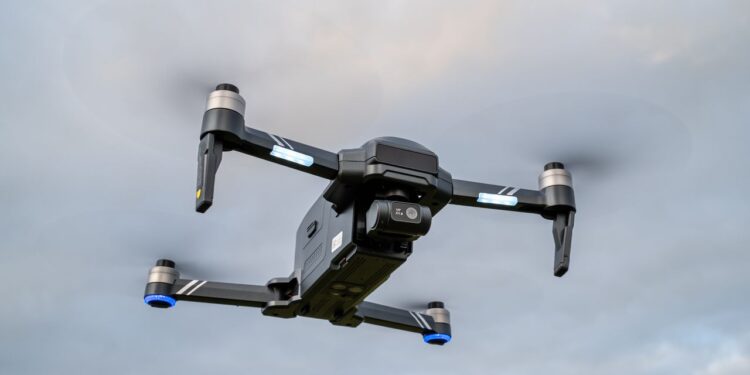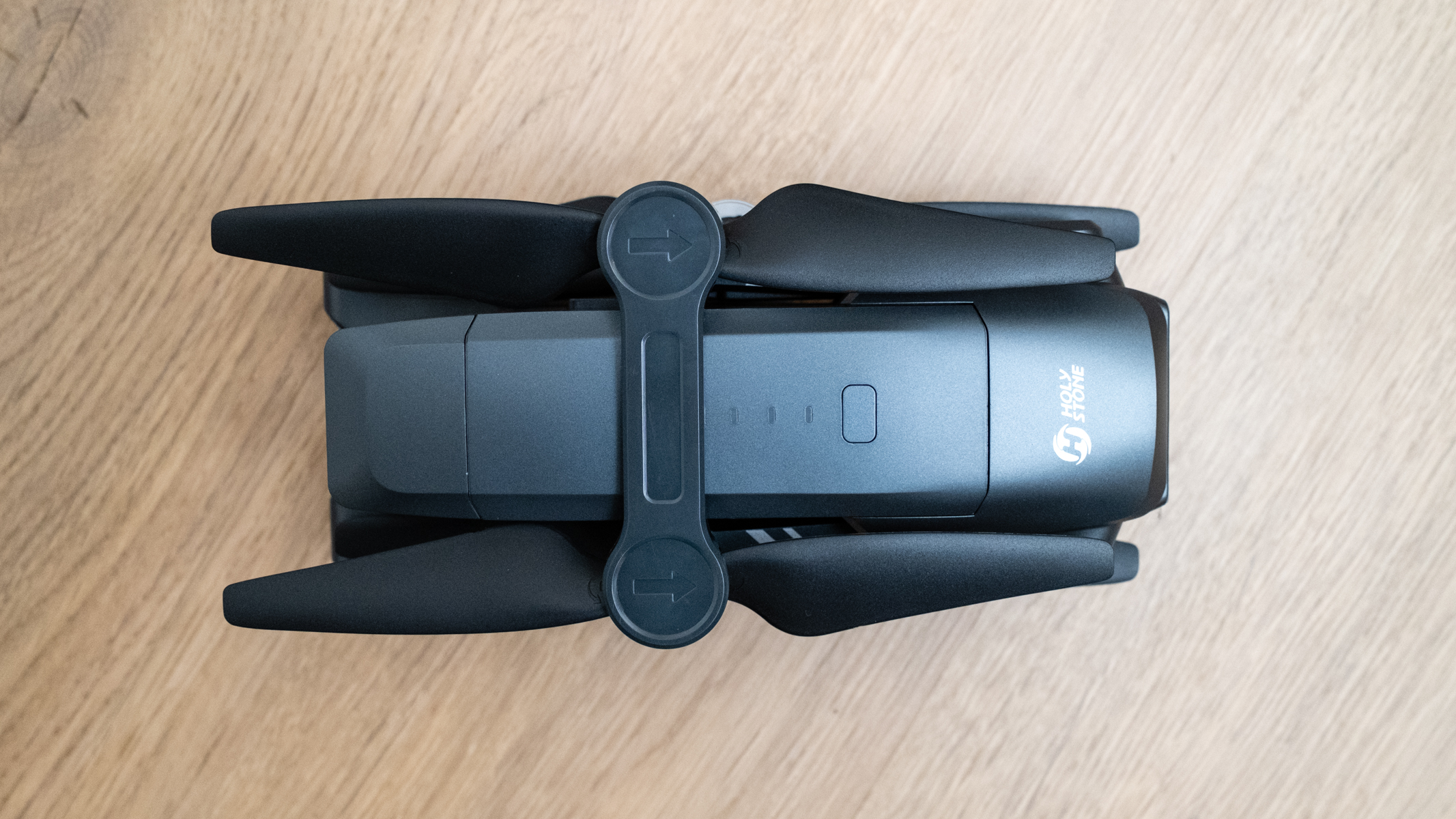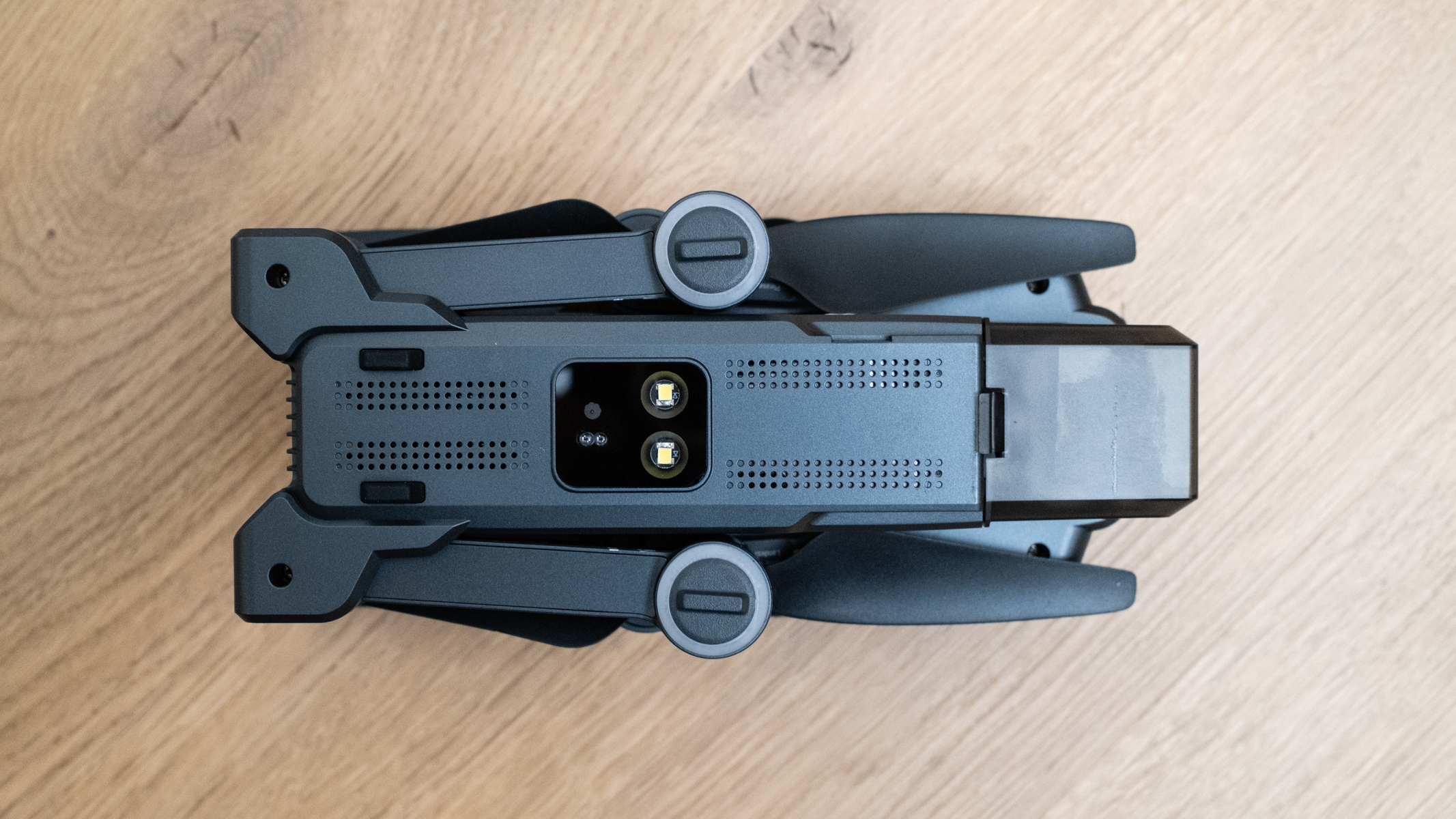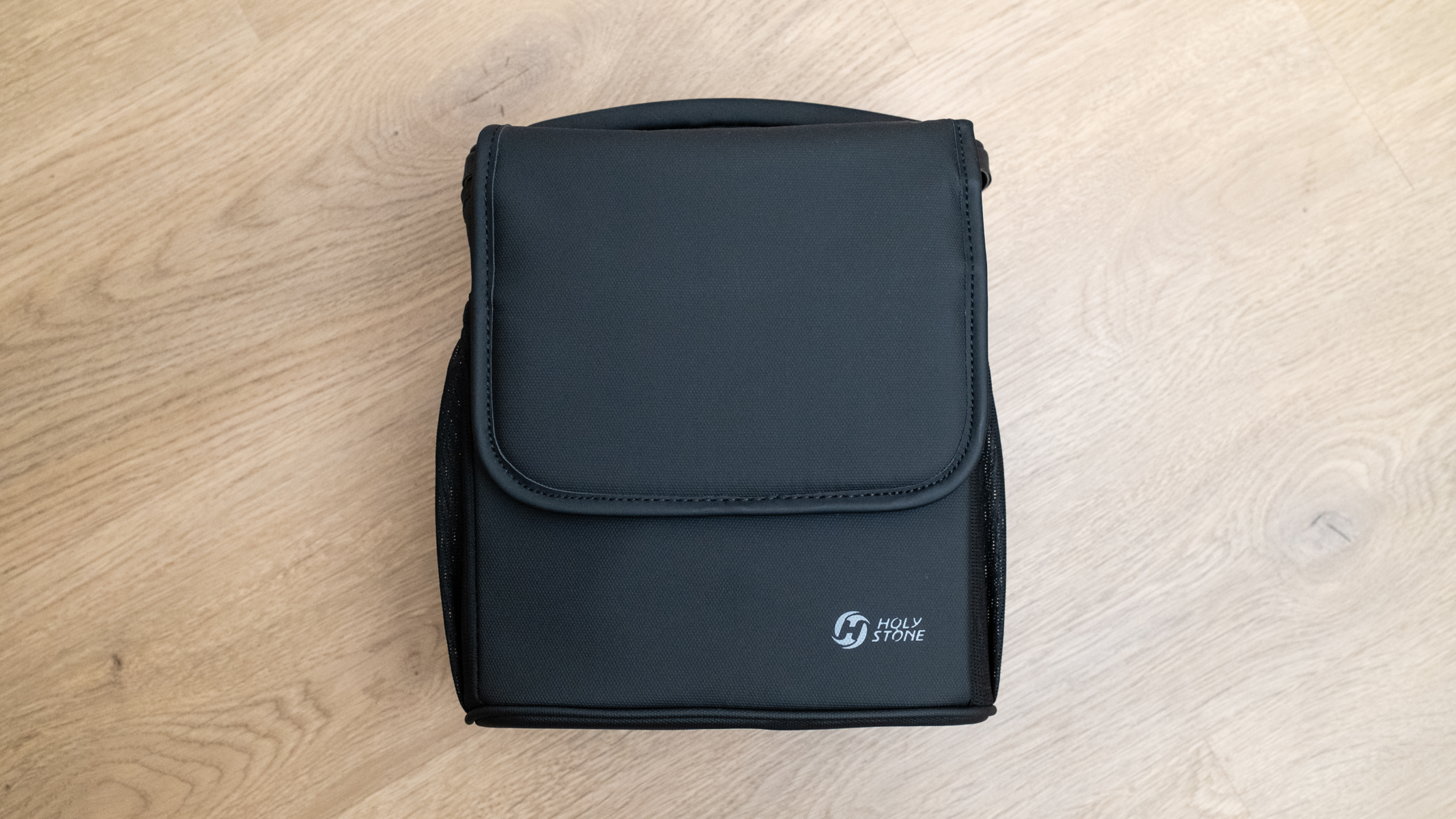Key specs
Camera: 48MP Sony 1/2.3 in CMOS sensor
Video resolution: 4K and 720p
Frame rates: 4K 30 FPS stored on microSD / 720p 30 FPS stored on smartphone
Battery: 3500 mAh LiPo / up to 40 minutes flight
Charger type: USB-C cable
Modes: Camera, Normal, Sport, GPS
Video transmission range: 3.72 miles
Dimensions: 7.95 x 3.74 x 3.27-in / 202 x 95 x 83 mm folded / 14.76 x 10.16 x 3.27-in / 375 x 258 x 83 mm unfolded
Weight: 21.03 oz / 603 g
Holy Stone has established itself as one of the most active drone manufacturers at the beginner end of the market, offering a wide range of options to suit the requirements of beginners. The Holy Stone HS600D is an upgraded version of the HS600 and delivers 4K 30 FPS video and large 48MP photos from its automatic camera.

It could be used by more advanced pilots for basic professional aerial tasks, but the fully automatic camera and mixed image quality will always be a hurdle to its use for more advanced operations. For beginners, this is a drone with GPS positioning, which in turn delivers features including GPS Return to Home and subject tracking. Plus, there are other creative features including timelapse, panorama, slow-motion video and Quickshots automated flight patterns.
Holy Stone HS600D: Design
- Folding design
- 3-axis gimbal
- Great controller
The HS600D sports a folding design where the propeller arms fold out, taking it from a compact 7.95 x 3.74 x 3.27-in / 202 x 95 x 83 mm when folded for travel, to 14.76 x 10.16 x 3.27-in / 375 x 258 x 83 mm unfolded for flight. The propeller arms fold in, in such a way that the large fixed propellers, rather than those made of two swivelling parts, sit parallel to the sides of the airframe.
Where the HS600D differs from most other folding drones is that its two front legs also fold out from the propeller arms to raise the front of the drone when on the ground. Despite these, the airframe still sits low to the ground so a landing mat will be a useful accessory for take-off and landing. Just bear in mind that this mid-sized drone weighs 21.03 oz / 603 g, so although it’s lightweight, US-based amateur pilots will need to register with the FAA.
The build quality of the drone is good and can’t be faulted, although it’s more plastic than metal. It’s fair to say that it’s not quite at the standard of the best drones available but don’t let that in itself put you off because there’s a huge price difference involved in many cases.
The gimbal and camera housing are also made of plastic, which is likely to keep both costs and weight down, but the 3-axis mechanical gimbal paired with Electronic Image Stabilization (EIS) does a great job of stabilizing video footage.
The 3500 mAh LiPo batteries are advertised to provide up to 40 minutes of flight, so with two batteries in the kit that’s up to an impressive hour and 20 minutes of potential flight time. Testing of the drone was conducted in early winter in the UK when temperatures were around 32°F / 0°C, so flight times were much lower at around 25 minutes, so a fair assessment couldn’t be made. In warmer months, battery life would naturally be extended.
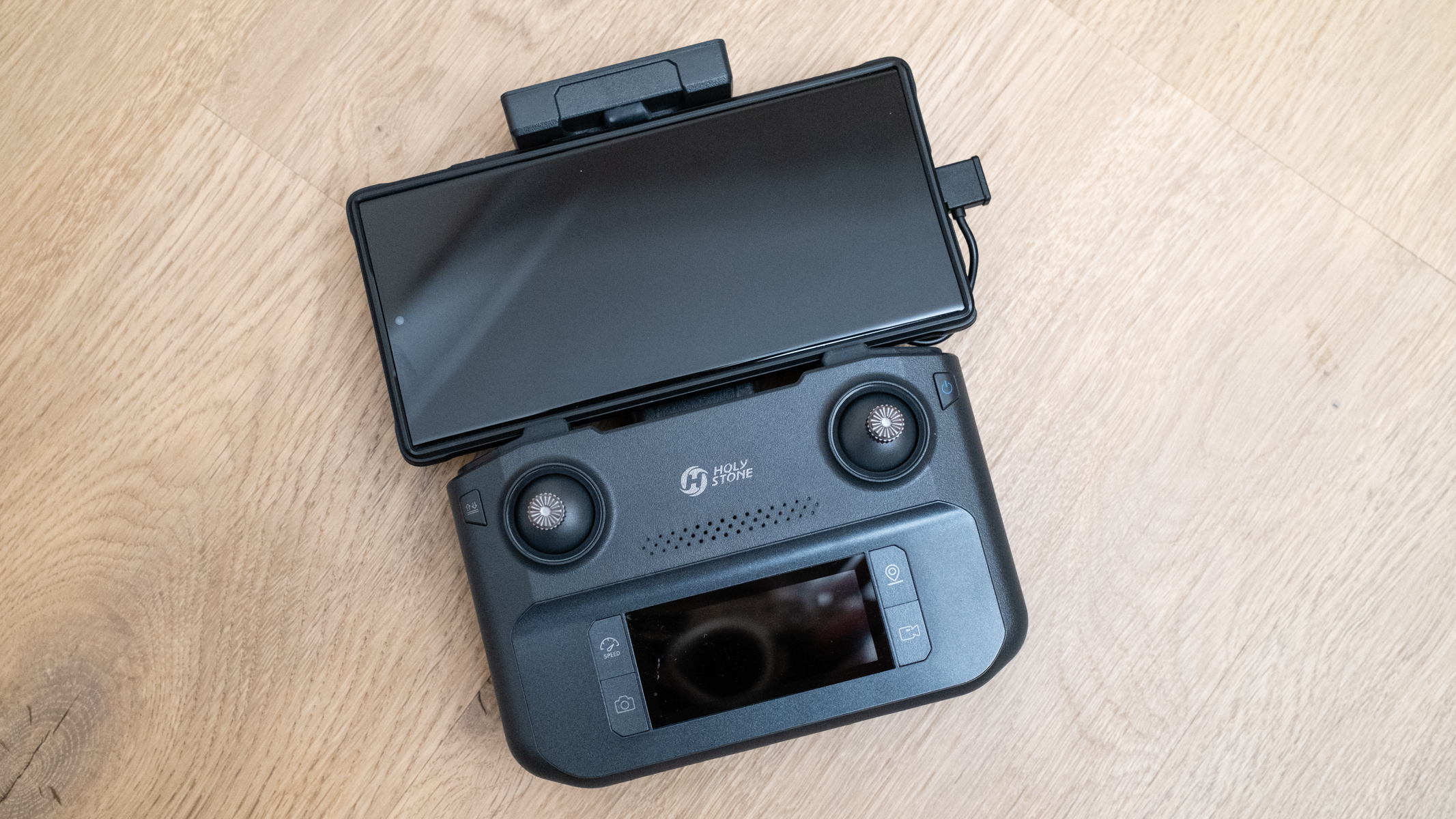
The controller that comes with the HS600D looks like it’s modelled on the DJI RC-N2, but with a screen to show flight information. There’s a telescopic phone holder at the top where the phone cable can be stored and the control sticks can be removed and stowed in rubberized compartments at the bottom of the unit.
There are also seven direct access controls to make operation more convenient by providing quick access to commonly used settings and features, which reduces the need to use app control. The controller and drone take 40 seconds to pair each time one or both are switched on, and with each flight in a new location, you’ll be prompted to calibrate the compass; this only takes around 15 seconds to complete so it’s never an issue.
Holy Stone HS600D: Functionality
- Auto Return to Home
- Timelapse functionality
- GPS subject tracking
Most drones these days come packed with a range of useful and, indeed, creative features. The HS600D is one such drone and delivers a handful of features that enhance the overall experience of using the drone from both a safety and creative point of view. Firstly, one feature that US pilots will appreciate is that the HS600D features a built-in Remote ID to meet FAA requirements.
This is also a GPS-enabled drone which means that it will hold a hover. Although, it’s not the most precise in this area — there is some horizontal and vertical movement. Sadly, you cannot rely on its precision at low altitudes and close to obstacles.
GPS does, however, deliver a couple of useful features which include GPS Follow Me, which uses the GPS signal from your smartphone to track you. Then there’s Return to Home (RTH) functionality with Smart RTH to return to the take-off point. Return to Home also offers Failsafe RTH and Low Voltage RTH, which bring the drone back in situations where the signal to the controller is lost and when the battery charge is low, among other situations.
Another safety feature, although one you wouldn’t need to use too often, if at all, is Optical Flow Positioning for indoor flights when a GPS signal is unavailable. This ultimately isn’t the type of drone that’s well-suited to indoor flight.
The HS600D also offers shooting modes including Panorama, Time-lapse and Slow Motion. All are easy to use but when creating a panorama, the final image is only available on your smartphone with low-resolution dimensions that vary from shot to shot but are typically around 2346 x 633 pixels.
This is despite the 48MP resolution of the sensor. There’s also AI Subject Tracking, which works well to follow the selected subject, but the drone either remains in a hover or you have to fly it manually if the subject is moving.
Then there are Quickshots automated flight patterns, including Point of Interest, Catapult, One-key Ascension and Spiral Up. Other options within the same menu include Gesture Selfie and Selfie Video, Camera Filter and Portrait Format Capture. For the latter, a 9:16 format 4K video is captured while a landscape format image is captured on the microSD card; the upright photo is saved to your smartphone in 9:16 format 4K dimensions.
Holy Stone HS600D: Performance
- Mixed image quality results
- Auto camera control only
- Photos in JPEG only

The HS600D camera features a 48MP Sony 1/2.3 in CMOS sensor and a fixed f/1.8 aperture. Information about the equivalent focal length produced by the lens is unavailable. The camera itself is fully automatic, so you simply point and shoot to capture photos and videos. The only adjustments available are for white balance, contrast, saturation, sharpness and brightness.
Frustratingly, there’s no control over exposure compensation, so in some situations, the camera will naturally over- or underexpose photos and videos slightly. This is an incredibly simple control that’s essential for any camera, but arguably most important for a fully automatic camera. With the sun behind the drone with the camera facing forward, however, exposure is typically fine. Image quality, like most drones, is best in brighter conditions.
Photos and videos are captured in two formats: one on the microSD card that’s inserted into the drone and another on your smartphone. Photos are captured at 48MP with dimensions of 8000 x 6000 pixels when saved to the microSD card in the drone. These are also saved to your phone at 3840 x 2160 pixels (4K).
<em>Please note the footage below was shot in 4K but our video player only plays in HD.
Video here
Panoramic images are only saved to your phone at low resolution rather than on the microSD card at a higher resolution. Video is captured at 4K 30 FPS when saved to the microSD card while 720p 30 FPS is set to your phone. It’s pretty basic, but the main thing here is that 4K video is captured at 30 FPS.
The image quality is pretty good, but what’s strange is that there’s a noticeable fall-off in depth-of-field further back into the scene you’re shooting, particularly with photos. The front of the scene is perfectly sharp but the fall off is visible. Video is much better when the drone is moving because the eye can’t settle on a fixed point, but with static video, you do notice the fall-off in sharpness.
Holy Stone HS600D: Price
The Holy Stone HS600D costs $400, which puts it up against some serious competition from the likes of the Holy Stone HS900, DJI Mini 4K and the DJI Mini 3. All three of these models are also regulator-friendly sub-250 g models. However, the HS600D is a larger and more powerful drone, which undoubtedly has advantages in certain situations.
The HS600D comes in a kit that includes the HS600D drone, a controller, two batteries, phone connection cables, USB-C cables for battery and controller charging, a spare set of propellers and a shoulder bag to carry everything. In a nutshell, this is everything you need to get started except for registering with your local aviation authority.
Should you buy the Holy Stone HS600D?
If you’re looking for a point-and-shoot drone where you have no control over camera exposure settings for photos and videos, the HS600D is one of the larger and more powerful models to offer this basic beginner functionality. There are also several other features available including time-lapse, slow-motion video, panorama and GPS subject tracking, so you do have creative options available.
As previously mentioned, the HS600D faces some stiff competition from some impressive drone models in the same price bracket. In light of this, you have to consider these models alongside the HS600D to decide which is ultimately the best model for you.
If this drone isn’t for you
The Holy Stone HS900 is the best drone Holy Stone has produced to date with excellent flight capabilities and a great camera to match. It’s also less expensive than the HS600D.
The DJI Mini 4K is DJI’s least expensive drone that’s capable of capturing 4K video. Image quality is great for a drone with a small sensor. Plus, it flies well and is incredibly easy to use.
The DJI Mini 3 is an affordable mini drone with a fantastic camera that can be rotated 90 degrees for capturing photos and videos in landscape and portrait formats. It’s a great sub-250 g all-rounder.
